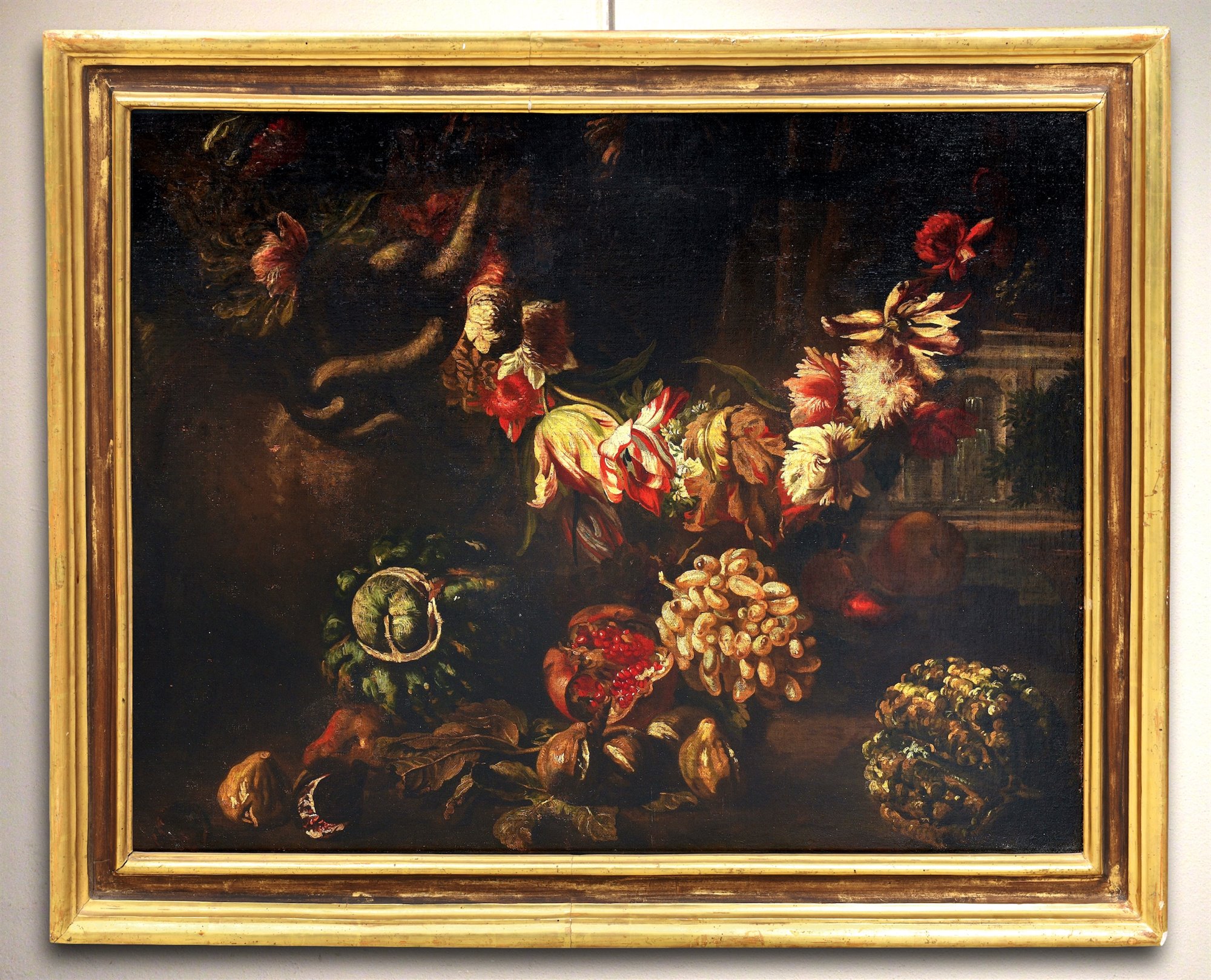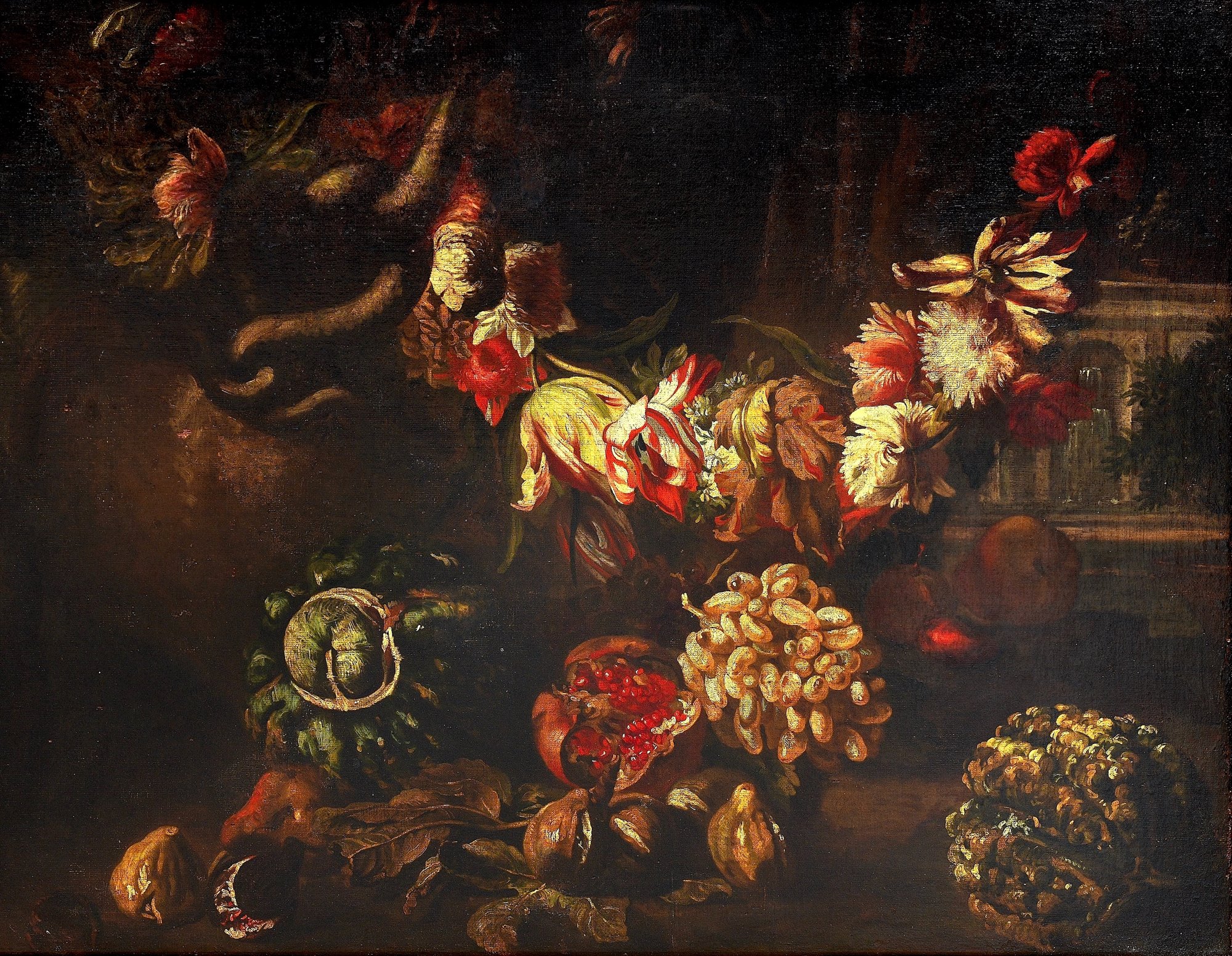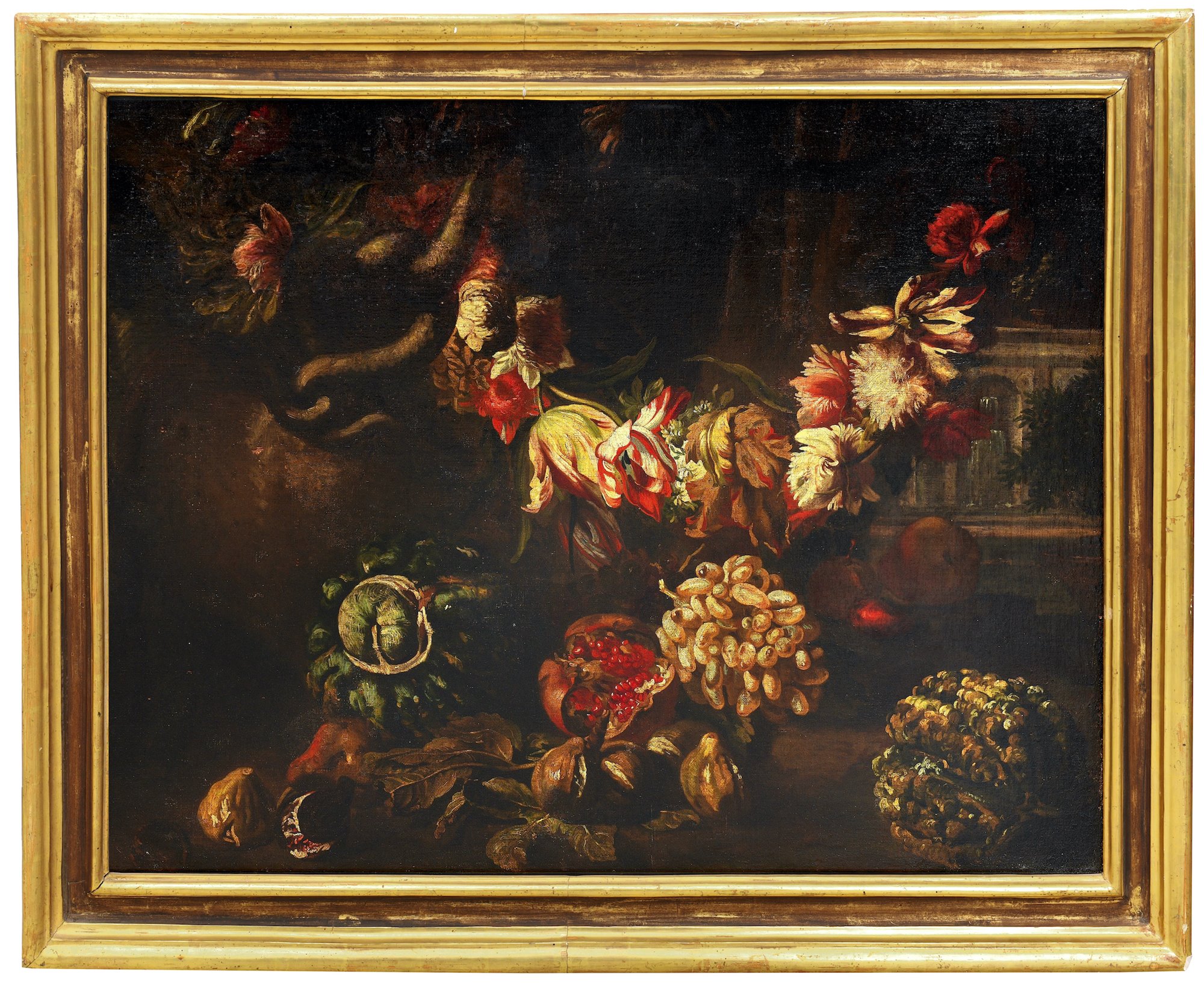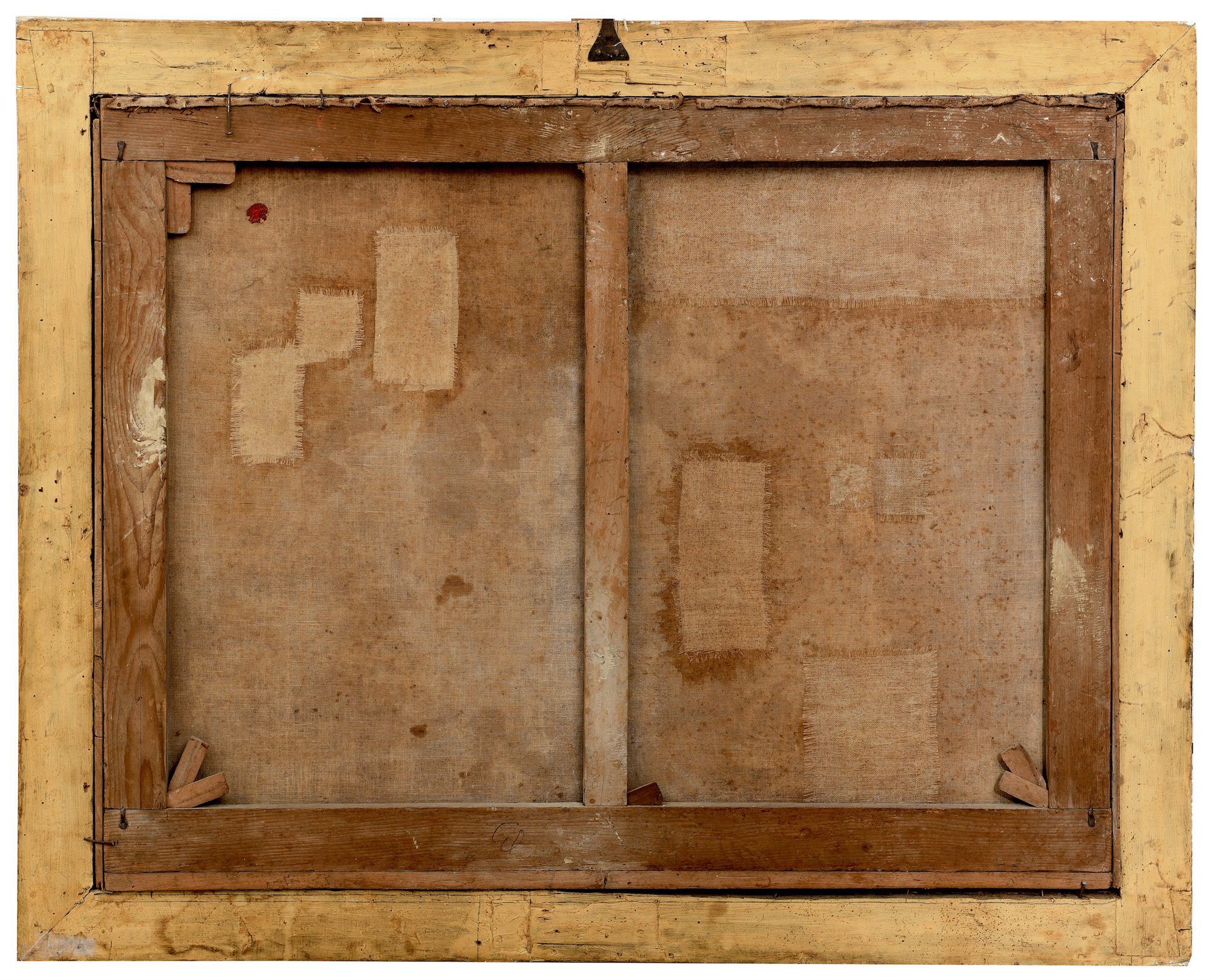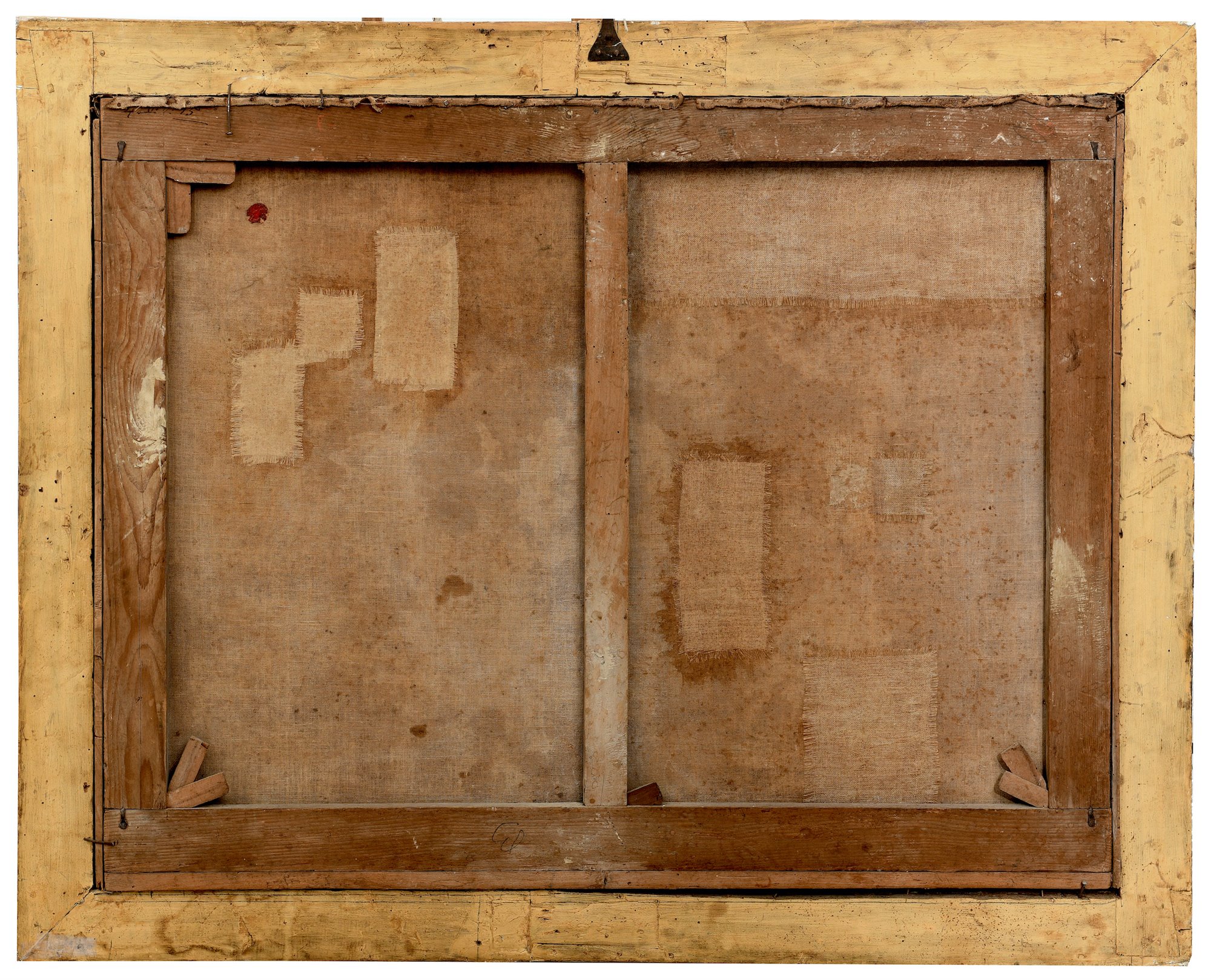Aniello Ascione (Napoli, notizie dal 1680 al 1708)
Natura morta con festone di fiori e frutta
Aniello Ascione
(Naples, news from 1680 to 1708)
(Naples, news from 1680 to 1708)
Still life with festoon of flowers and fruit
Oil painting on canvas
89 x 117 cm
in frame
With expertise and attributive study by Prof. Stefano Causa (University of Naples)
Details of the work with extract of the expertise:
'' This fruit composition with a festoon of flowers belongs to Aniello Ascione's brush and is a prominent addition to the final game of the Neapolitan still life - the most baroque and decorative one can imagine. The naturalistic work, still Caravaggesque, of the specialists of the early sixteenth century, from Luca Forte to Porpora, now seems a distant memory.
The name of Ascione also comes from the comparison with the still life signed by the Civic Museum of Castello Ursini in Catania, against which the painting in question qualifies as a sixteenth version. On the other hand, it is not uncommon for easily repeatable patterns to recur in the workshops of still life painters. The melon on the right, the rush of flowers and, in the background, the profile of a column or a fountain. We could compare them to the normalized formal types used by great southern composers such as Alessandro or Domenico Scarlatti (with whom, however, we find ourselves more or less at the same time as our painting).
Set on a diagonal cut, our painting connects to the Neapolitan climate split between Giordano and Francesco Solimena (also in its connections with the contemporary Roman scene of a Michelangelo from Campidoglio and a Spadino). These are the years when still life rises, so to speak, to the maximum volume of presentation. But let's not get ahead and get closer.
We are faced with a complex work conceived for amateurs willing to slowly make their way through fruit and flowers with their eyes (and smell). Every single element of the composition is weighed in its individuality and conceived in relation to a large whole. The reading of the painting is triggered by the melon on the right with the jagged skin (a mark of the Ruoppolo family and a badge of belonging).
Immediately to the side, a carpet of half-open figs and leaves occupies the foreground of the canvas.
The solution of calibrating the fruits diagonally revives the composition by increasing its depth. The shady, almost earthy quality of the surface is decanted in the almost obscenely open pomegranate with the seeds streaked with light; Moving to the right, the fireworks of the bunch of grapes explode (of that particular species which, in the South, is called cornicella grapes).
The spectacle of the painting could also end here if, in the center of the page, similar to a versicolor hammock, the festoon did not impose itself as a theatrical coup and as one of the beautiful ideas of the final season of still life. To use an overused metaphor, these paintings are a feast for the eyes. On the right, in the background, peeps out, as a tribute, a piece of architecture with a fountain that Giordano himself would not have rendered with different enthusiasm.
[...] ''
For more information, please contact us.
Painting accompanied by a certificate of photographic authenticity in accordance with the law (FIMA)

